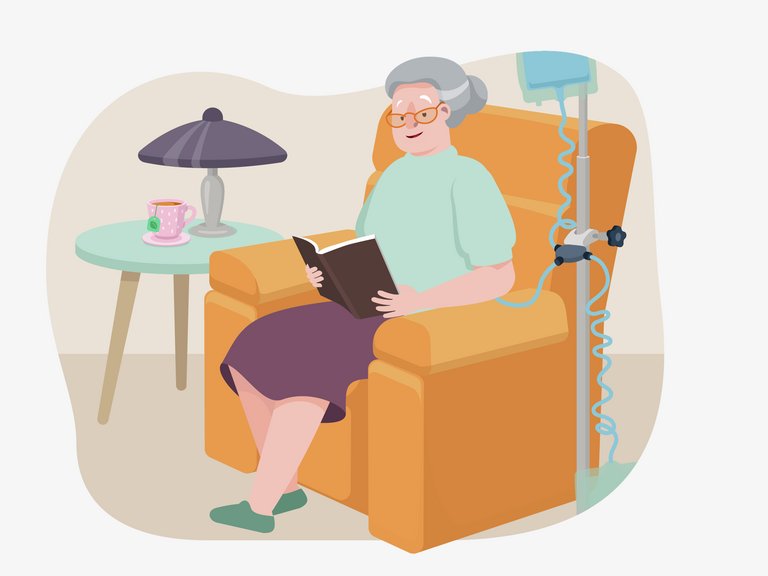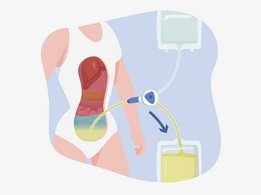Haemodialysis can be performed at home, in a self-care / limited-care unit or in a dialysis centre.
Peritoneal dialysis at Home
The catheter stays in place the entire time a patient is on peritoneal dialysis therapy. When dialysate is present in the peritoneal cavity, removal of waste products and excess water takes place until the concentrations of solutes on the blood side and the dialysate side are equilibrated. This movement of water and waste products takes place during the dwell time. After a certain dwell time, the infused dialysate is drained out again via the catheter. Peritoneal dialysis continues as the drained PD fluid is replaced with fresh PD fluid. This process of replacing the used PD fluid with fresh PD fluid is called an exchange. An exchange is repeated several times a day, usually 4-5 times.
Peritoneal access
Hygiene in peritoneal dialysis
The skin is a natural barrier to microorganisms. If the skin has little ruptures, harmful organisms can enter our body and bloodstream and may cause an infection. This is why a good fixation of your catheter is extremely important. Otherwise, the movement of the catheter will cause damage to the skin at the exit site, and this might result in an infection.
In PD it is vital to follow strict hygiene techniques in order to prevent microorganisms from entering the peritoneal cavity via the catheter, catheter extension or during the bag connection. Applying hygiene rules in your daily routine is the best way to keep you from getting an infection of the peritoneum, called peritonitis.
PD modalities
CAPD (Continuous Ambulatory Peritoneal Dialysis) – manual exchange
In CAPD, most exchanges take place during the day. Typically, four to five exchanges a day are performed. Your doctor will prescribe how many exchanges per day are necessary to provide adequate dialysis treatment. Each exchange takes about 20-30 minutes. Exchange times can vary somewhat to fit your schedule, especially if you work or go to school. Your healthcare team will help you to set up a schedule that works best for you.
APD (Automated Peritoneal Dialysis) – automatic exchange
In APD, most exchanges take place during the night with the help of a device called a cycler. You are connected to the cycler for approximately 8 - 10 hours. The PD fluid is delivered via a special tubing set from the cycler to the patient. The cycler drains and refills the peritoneal cavity automatically while you sleep. In the morning you disconnect yourself from the cycler and you are free for your daily activities. There are different prescriptions on APD, depending on your lifestyle and medical condition.
Support & service
Peritoneal dialysis supplies
Your dialysis prescription is specific to your needs. Your doctor and your nurse complete and sign a prescription list with your supplies and the amounts necessary for your treatment. Please remember: Changes to your prescription must always be made by your doctor!
Safety stock is used if a delivery is delayed due to no one being at home, bad weather, or in case your prescription changes. All supplies will be taken to your storage area. Your customer service representative will then contact you two weeks after your first shipment to determine your inventory and assist you in ordering supplies for your next delivery.





